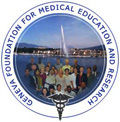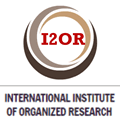Clinical and endoscopic evolution in patients with portal hypertension syndrome
Keywords:
portal hypertension síndrome; endoscopic evolution; clinical evolutionAbstract
Introduction: Portal hypertension is a clinical syndrome that affects the quality of life of patients, with high morbidity and mortality in clinical practice due to its potentially life-threatening complications.
Objective: To describe the clinical characteristics and endoscopic course of adult patients with portal hypertension syndrome diagnosed since childhood.
Method: A descriptive study was conducted in 42 patients with the disease. Data were obtained from a review of medical records. Summary measures were used for qualitative and quantitative variables, and the Chi-square test for independence was used.
Results: Umbilical catheterization was the most common clinical presentation (71.43%), and splenomegaly (66.67%). Collateral circulation was the main ultrasound finding (92.85%). Propranolol was used in 42.85% of patients, and among them, 66.65% improved. Of these patients, 80.95% improved or remained unchanged.
Conclusions: It is concluded that umbilical catheterization was the most common antecedent among patients, and the most frequent clinical presentations were splenomegaly and upper gastrointestinal bleeding. Among the most frequently observed ultrasound findings were collateral circulation, decreased portal vein flow velocity, hepatofugal flow, and increased portal vein caliber. The most commonly used treatment was propranolol; among these, and in all patients, improvement or unchanged progression predominated.
Downloads
References
1. Muñoz O, Ferrusquía-Acosta J, Serna-Patiño LM, Cárdenas A. Diagnostic methods of portal hypertension. Rev colomb Gastroenterol [Internet]. 2021 [citado 20/02/2025]; 36(2):[aprox. 2p.]. Disponible en: https://www.scielo.org.co/scielo.php?script=sci_arttext&pid=S0120-99572021000200218&lng=pt.
https://doi.org/10.22516/25007440.692
2. Premkumar M, Anand AC. Porto-sinusoidal Vascular Disease: Classification and clinical relevance. J Clin Exp Hepatol [Internet]. 2024 [citado 24/02/2025];14(5):[aprox. 2p.]. Disponible en: https://pubmed.ncbi.nlm.nih.gov/38601747/
https://doi.org/10.1016/j.jceh.2024.101396
3. Bass LM, Shneider BL, Henn L, Goodrich NP, Magee JC. Childhood Liver Disease Research Network (ChiLDReN). Clinically Evident Portal Hypertension: An Operational Research Definition for Future Investigations in the Pediatric Population. J Pediatr Gastroenterol Nutr [Internet]. 2019 [citado 23/02/2025]; 68(6):[aprox. 3p.]. Disponible en: https://pubmed.ncbi.nlm.nih.gov/30908382
https://doi.org/10.1097/mpg.0000000000002333
4. Agüero N, del Pilar Y, Ramírez Puig NM, Machado Díaz M. Cavernomatosis de la porta: presentación de un caso. Rev pediatr Electrón [Internet]. 2020 [citado 23/02/2025];17(4):[aprox. 3p.]. Disponible en: https://pesquisa.bvsalud.org/portal/resource/pt/biblio-1369278
5. Peña Basulto A, Santiesteban Rodríguez B, Corpas R. Hipertensión portal prehepática por cateterismo umbilical a propósito de un caso. HolCien [Internet]. 2023 [citado 24/02/2025];4(1): [aprox. 2p.]. Disponible en: https://revholcien.sld.cu/index.php/holcien/article/view/242/129
6. Comité Nacional de Hepatología, Comité Nacional de Gastroenterología; Colaboradores. Guidelines for diagnosis and follow-up of children and adolescents with portal hypertension. Arch Argent Pediatr [Internet]. 2022 [citado 10/02/2025]; 120(1):S9-S18. Disponible en: https://pubmed.ncbi.nlm.nih.gov/35068133/
https://doi.org/10.5546/aap.2022.s9
7. Díaz Alcázar MM, Lagos Maldonado AM, Casado-Caballero FJ. Afectación del intestino delgado en la telangiectasia hemorrágica hereditaria. Rev andaluza de patología digestiva [Internet]. 2020 [citado 11/01/ 2025]; 43(1):[aprox. 2p.]. Disponible en: https://dialnet.unirioja.es/servlet/articulo?codigo=7340239
8. Mironova M, Gopalakrishna H, Viana Rodriguez GM, Abdul Majeed N, Hitawala AA, Fuss IJ, et al. Prospective evaluation of patients with non-cirrhotic portal hypertension: A single centre study. Aliment Pharmacol Ther [Internet]. 2024 [citado 15/01/2025]; 59(12):[aprox. 3p.]. Disponible en: https://pubmed.ncbi.nlm.nih.gov/38629442/
https://doi.org/10.1111/apt.17987
9. Chen Y, Lin J, Jiang X, Zhou Q, Zhang H. A POEMS syndrome patient with idiopathic non-cirrhotic portal hypertension received the transjugular intrahepatic portosystemic shunt: a case report and literature review. Niger J Clin Pract [Internet]. 2022 [citado 23 /12/ 2024]; 25(11):[aprox. 3p.]. Disponible en: https://pubmed.ncbi.nlm.nih.gov/36412305/
https://doi.org/10.4103/njcp.njcp_360_22
10. Levigard RB, Salas H, Serrão H, Diniz F, Villela Nogueira CA, Araújo de Oliveira A, et al. Liver Growth and Portal Hypertension Improvement After Percutaneous Recanalization of Chronic Portal Vein Thrombosis in Non-Cirrhotic Participants. Cardiovasc Intervent Radiol [Internet]. 2022 [citado 21/12/2024];45(5):[aprox. 2p.]. Disponible en: https://pubmed.ncbi.nlm.nih.gov/35166884/
https://doi.org/10.1007/s00270-022-03065-7
11. de Franchis R, Bosch J, Garcia-Tsao G, Reiberger T, Ripoll C. Baveno VII Renewing consensus in portal hypertension. J Hepatol [Internet]. 2022 [citado 11/12/2024];76(4):[aprox. 2p.]. Disponible en: https://pubmed.ncbi.nlm.nih.gov/35120736/
https://doi.org/10.1016/j.jhep.2021.12.022
12. Kaji K, Yoshiji H. Can portal hypertension and hepatic decompensation be predicted? J Gastroenterol [Internet]. 2020 [citado 02/11/ 2024]; 55(6): [aprox. 3p.]. Disponible en: https://pubmed.ncbi.nlm.nih.gov/31965301/
https://doi.org/10.1007/s00535-020-01669-9
13. Sharma S, Agarwal S, Anand A. Noninvasive Diagnosis of Clinically Significant Portal Hypertension in Patients With Compensated Liver Disease: Whom and How to Screen? Am J Gastroenterol [Internet]. 2021 [citado 18/05/2024]; 116(5):[aprox. 3p.]. Disponible en: https://pubmed.ncbi.nlm.nih.gov/33229979/
https://doi.org/10.14309/ajg.0000000000001078
14. Zhang XX, Guo SJ. Effect of non-selective β-receptor blockers on inflammatory factors and prognosis in advanced chronic liver disease. World Chin J Dig [Internet]. 2019 [citado 24/02/2025]; 27(12): [aprox. 3p.]. Disponible en: https://www.scilit.com/publications/3a107995c8ca5f5b22d10fd214a70464
https://doi.org/10.11569/wcjd.v29.i19.111
15. Mauro E, Adrián Gadano A. What's new in portal hypertension? Liver Int [Internet]. 2020 [citado 14/12/2024];40(1):[aprox. 2p.]. Disponible en: https://pubmed.ncbi.nlm.nih.gov/32077610/
https://doi.org/10.1111/liv.14366
16. Jothimani D, Rela M, Kamath PS. Liver Cirrhosis and Portal Hypertension: How to Deal with Esophageal Varices? Med Clin North Am [Internet]. 2023 [citado 20/05/2024];107(3):[aprox. 3p.]. Disponible en: https://pubmed.ncbi.nlm.nih.gov/37001949/
https://doi.org/10.1016/j.mcna.2023.01.002
17. Gioia S, Nardelli S, Ridola L, Oliviero Riggio O. Causes and Management of Non-cirrhotic Portal Hypertension. Curr Gastroenterol Rep [Internet]. 2020 [citado 15/09/2024];22(12):[aprox. 2p.]. Disponible en: https://link.springer.com/article/10.1007/s11894-020-00792-0
Downloads
Published
How to Cite
Issue
Section
License
Copyright (c) 2025 Juan Mario Reyes Vera

This work is licensed under a Creative Commons Attribution-NonCommercial 4.0 International License.
Authors who have publications with this journal agree to the following terms:
- Authors will retain their copyright and assign to the journal the right of first publication of their work, which will simultaneously be subject to a Creative Commons License / Attribution-Noncommercial 4.0 International (CC BY-NC 4.0) that allows third parties to share the work as long as its author and first publication in this journal are indicated.
- Authors may adopt other non-exclusive license agreements for distribution of the published version of the work (e.g., depositing it in an institutional repository or publishing it in a monographic volume) as long as the initial publication in this journal is indicated.
- Authors are allowed and encouraged to disseminate their work through the Internet (e.g., in institutional telematic archives or on their web page) before and during the submission process, which can produce interesting exchanges and increase citations of the published work. (See The effect of open access).





 november 15 2025
november 15 2025


